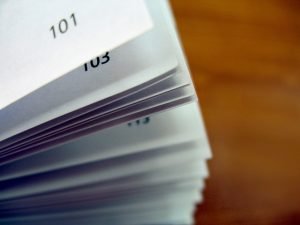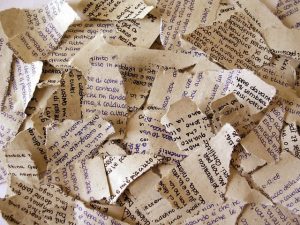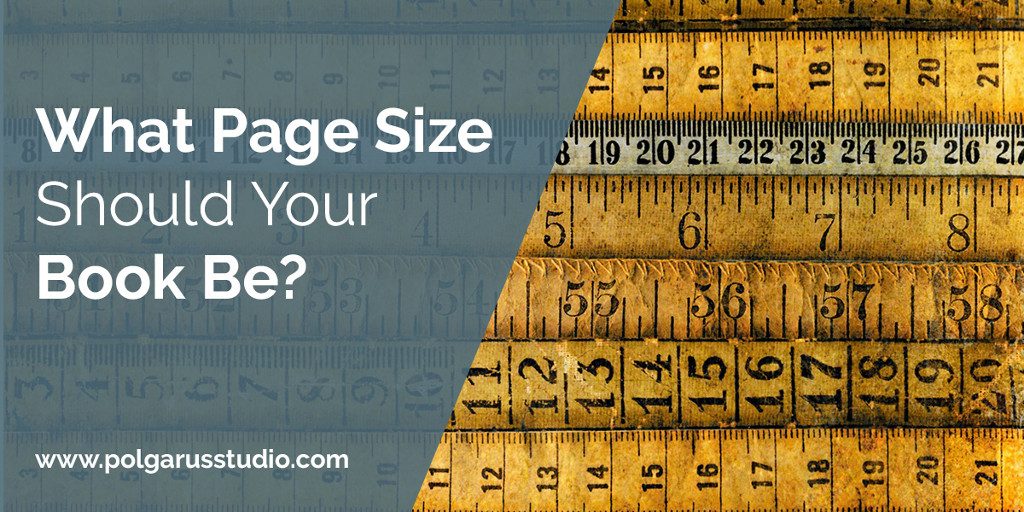A very common question we get asked is “what page/trim size should I use for my book?” There is a very simple (but useless) answer – there is no correct answer!
Now that I’ve got that out of the way, allow me to expand a bit 🙂
What I mean is that there is no “you must use this size” answer. There isn’t a formula where you plug in some numbers and get a result. All we can do is give you some guidelines, and then let you make the choice that feels right to you.
The four most common sizes used by indie authors are 5″x8″, 5.25″x8″, 5.5″x8.5″ and 6″x9″ (for reasons that will become obvious shortly). These aren’t the only sizes available in some situations (I’ll go into more detail about that later), but for most of the article, I’ll assume you’re trying to pick between one of these four sizes.
There are also four factors that affect the size you choose for your book.
- Book length
- Reader expectations
- Where you are printing the book
- Your personal preference
We’ll look at each of these a bit closer.
1. Book Length
When it comes to selling your book via print on demand (POD) services (Ingram Spark, CreateSpace, KDP Print, etc.), the minimum cost of your book is determined by the number of pages in your book.
The more words in your book, the more pages it will take up. But changing the page size will change the page count. Everything else being equal, a small page size will mean a higher page count (and higher cost), while a larger page size will reduce the page count (and the cost).
So if using 5×8 for your book means it will be 500 pages, but using 6×9 makes your book 350 pages, the 6×9 version will have a lower cost. The lower cost means that you can sell your book at a lower price, or you can enjoy a larger profit per copy sold.
(One side note – if you are writing a series, all the books should be the same size! So if your first book is relatively short, but you know later books will be longer, it might make sense to use a larger page size for the first book than you might normally, just so all the books are consistent later on).

2. Reader Expectation
Of course, the counteracting force to having a low page count as your default choice is reader expectation. There are two expectations your book has to meet:
- Is the page count what I expect a book of this type to be?
- Is the page size of this book the size I expect it to be?
These expectations will vary based on genre. For example, romance readers will (generally) be used to lower page counts, while high-fantasy readers expect higher page counts.
You will need to do a bit of research on other books in your genre and have a look at the sizes and page counts of popular books. You can then use this to help guide your decision.
When you do look at other books (especially traditionally published books), you will find page sizes that aren’t one of the four I listed above. In some situations, you can use these other sizes. It all depends on the third factor affecting your book size.
3. Where You Are Printing Your Book
I plan to write an article on the pros and cons of the different printing sites in the future, but for now, I’ll try to give a quick overview.
There are three common options for printing your book – CreateSpace, KDP Print, and IngramSpark/Lightning Source (we’ll treat IngramSpark and Lightning Source as the same site for this article since Ingram own both of them).
(Yes, there are other sites where you can print books, but these options are the most common ones used).
The most restrictive option for page sizes is choosing to print on CreateSpace, but wanting to make your print book available to sites other than Amazon for sale (so places like Book Depository, Barnes & Nobel, etc.). This is done on CreateSpace using the Expanded Distribution option, and if you want cream paper (which almost all novels use), you must use one of the four sizes mentioned at the start of the article.
If you plan to only sell your print book on Amazon, you can use either CreateSpace or KDP Print. This does give you a few more options for page size (adding sizes like 5.06×7.81, 7×10, etc.).
If you want to focus on selling your print book on sites other than Amazon (making it easier for bookstores to buy for example), IngramSpark and Lightning Source may be the best choice. These sites again give you a lot more options for page size. And if you did your research on the sizes that traditionally published books use in your genre, you’ll probably find options for those sizes here.
(The large downside to using only IngramSpark or Lightning Source to sell your print book, and ignoring CreateSpace/KDP Print, is that it may take months for your print book to appear on Amazon. But it will eventually appear).

4. Your Personal Preference
Let’s be honest – we’re talking about your book here. While all the factors above should play a part in your decision, ultimately you need to be happy with the final printed version of your book. If you want your book to be a certain size, or over/under a certain page count, go with the page size that you like!
If you aren’t happy with how your book looks, how can you be enthusiastic when you talk about the book with readers?
If you’ve reached the end of the article and you still have no idea what page size to choose, I’ll finish with a basic rule of thumb that we offer (aimed at keeping the page count, and your cost to print, as low as possible). We suggest using 5×8 (or 5.25×8) for books less than 50k words, 5.5×8.5 for books between 50k and 80–90k, and 6×9 for anything longer.
Will this give you the best size? Of course not :). There is no “best” size! Just a size that works for you.
I hope this article has helped you decide on what page size to use when printing your book. Happy publishing!
